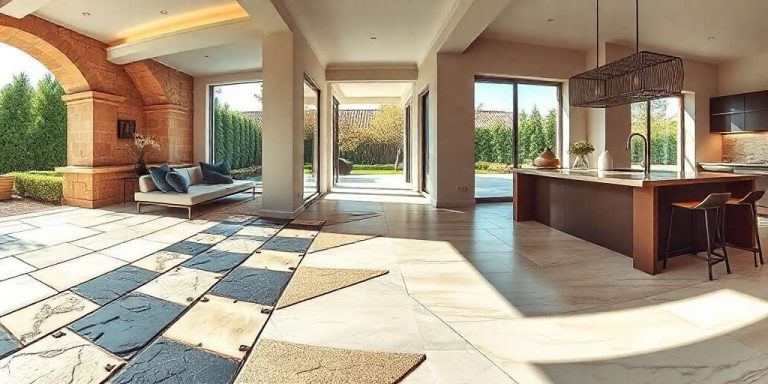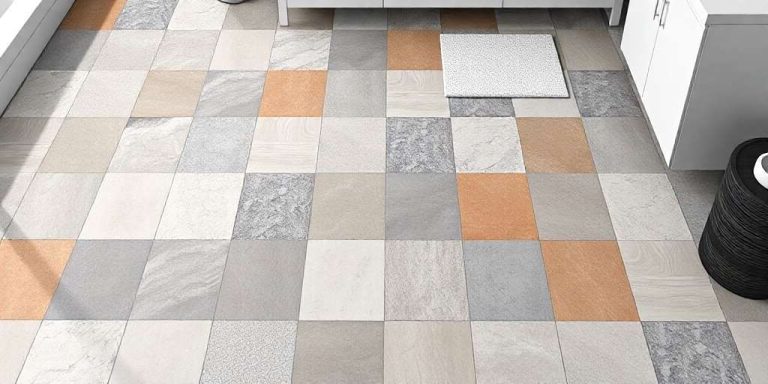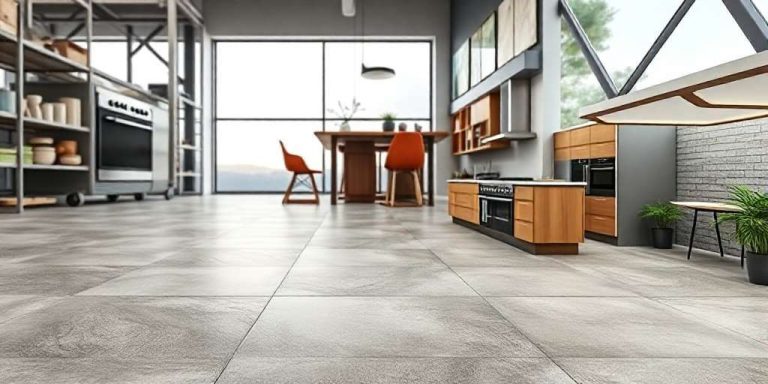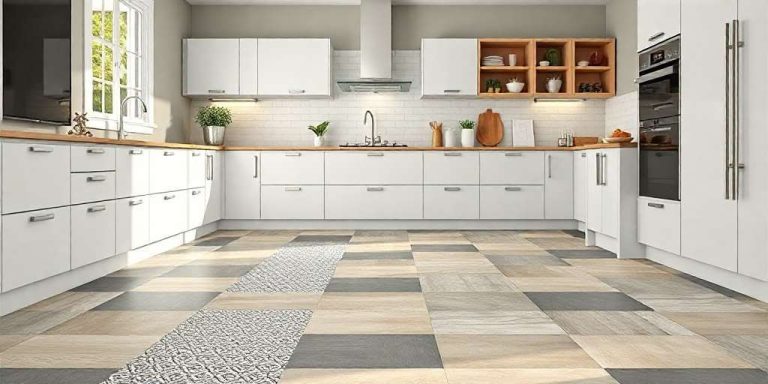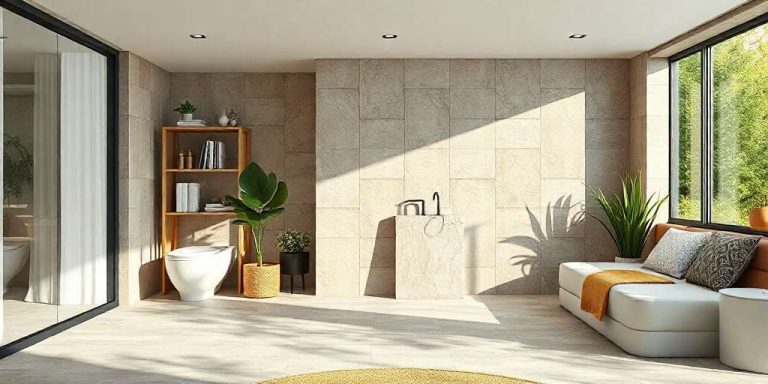Marble Tile: Elevate Your Space with Elegant Designs and Applications
Marble tile is a popular choice in home design, known for its elegance and durability. It adds a luxurious touch to various spaces, including floors, walls, and countertops. This article explores different aspects of marble tiles, from selecting the right style to installation and maintenance. The versatility of marble allows it to suit both traditional and modern aesthetics.
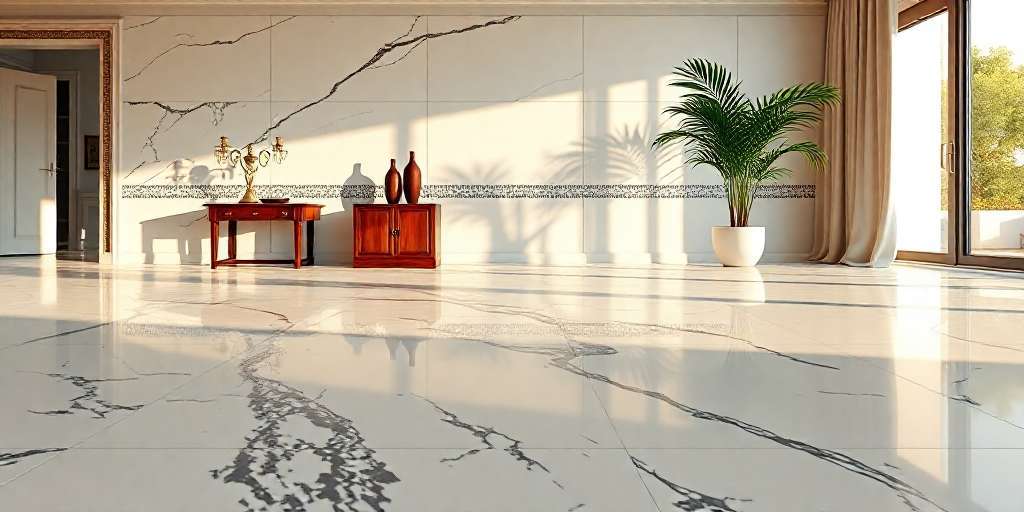
Understanding Marble Tile Flooring
In the realm of interior design, marble tile flooring exudes an air of sophistication and timeless beauty. Known for its luxurious appeal, this flooring option has captivated homeowners and designers alike for centuries. The allure of marble flooring lies in its unique patterns and colors, which stem from the natural stone’s geological formation. Each tile displays a distinct veining pattern, making it one-of-a-kind.
This type of flooring is a popular choice due to its durability and longevity. When properly maintained, marble tiles can withstand heavy foot traffic while retaining their polished appearance. They are suitable for various spaces, enhancing the aesthetic of both residential and commercial interiors. Among the notable qualities of marble are its natural coolness and elegance, lending itself well to both traditional and contemporary settings.
- Various color options available, including shades like white, black, and cream.
- Polished surfaces reflect light, creating a bright atmosphere.
- Textured finishes offer slip resistance while preserving beauty.
When considering marble tile flooring, it’s essential to understand factors such as porosity and susceptibility to staining. Despite its beauty, marble can be more vulnerable to damage from spills and acidic substances. Proper sealing and maintenance protocols are crucial to ensuring the longevity of the material.
In essence, marble tile flooring embodies elegance, versatility, and lasting value. With its unique traits, it remains a prominent choice for those looking to infuse a touch of luxury into their spaces.
Choosing the Right Marble Tiles for Your Room
Selecting the appropriate marble tiles for a specific space requires careful consideration of various factors. Each area of a home has its own unique requirements, influencing the choice of color, texture, and finish.
First, understanding the intended use of the room is crucial. High-traffic areas, such as hallways and living rooms, would benefit from durable options that resist wear. Soft hues might contribute to a calming atmosphere, while bold colors can serve as stunning focal points.
Another key aspect is the size of the tiles. Larger tiles can create an illusion of space, making a room feel more open. On the other hand, smaller tiles can add intricate detail, especially in smaller areas or as accent features.
- Color Palette: Choose colors that complement the overall design theme of the room. Light-colored tiles can brighten a space, while darker shades may add warmth and sophistication.
- Texture: The decision between polished and matte finishes can significantly alter the ambiance. Polished tiles reflect light, enhancing brightness, while matte options provide a more understated look.
- Veining Patterns: Marble tiles come in various veining styles. Selecting a tile with unique patterns can add character and visual interest, transforming an ordinary room into a striking one.
It is also essential to consider practical aspects. For instance, kitchens may require tiles that are resistant to stains, while bathrooms benefit from slip-resistant surfaces. Ensuring that the chosen tiles meet specific functional needs is necessary for overall satisfaction.
Finally, sampling a few options before making a final decision allows for an accurate assessment of how the tiles interact with the room’s lighting and overall decor. Observing the materials in context can greatly aid in making an informed choice.
Installation Essentials for Marble Tile Floors and Walls
Setting up marble tiles requires careful planning and the right tools to ensure lasting beauty and durability. The installation process for marble tiles can differ depending on whether they are being applied to floors or walls. Proper preparation is essential to achieve the desired finish and longevity.
Preparation Steps
Before beginning the installation process, several preparatory steps must be taken:
- Assessing the substrate is crucial; it should be clean, dry, and level.
- Choosing the right adhesive is important as some adhesives work better with marble than others.
- Acclimating the tiles in the room where they will be installed helps prevent expansion or contraction after installation.
Installation Process
The method of installation often varies based on the surface but generally includes these key steps:
- Applying a suitable thin-set mortar to the substrate using a notched trowel can create a strong bond.
- Carefully laying each tile while ensuring proper alignment and spacing is vital for a polished appearance.
- Utilizing tile spacers helps maintain even gaps, which is essential for grout application.
- Cutting tiles accurately is necessary to fit around corners and edges; a wet saw can provide precise cuts.
Grouting and Sealing
Once all tiles are installed, attention turns to grouting. Selecting a grout that complements the marble enhances the overall look. After grouting, sealing the tiles is crucial to prevent staining and water damage.
Sealing should be done after the grout has cured, typically 72 hours post-installation. Regular maintenance and reapplication of sealant will help preserve the beauty and functionality of marble tiles.
Maintaining and Protecting Marble Tile Floors and Walls
Proper care is essential for preserving the beauty and longevity of marble tiles. Regular maintenance not only enhances their appearance but also helps protect against wear and potential damage. It is crucial to adopt an effective cleaning and maintenance routine.
- Regular Sealing: Marble is inherently porous, requiring a protective sealant to prevent staining. Sealing should be performed at least once a year, or more frequently in high-traffic areas, to create a barrier against spills and stains.
- Gentle Cleaning Solutions: Using a pH-balanced cleaner designed for marble surfaces is vital. Solutions that are too acidic can damage the finish, resulting in dullness. Water mixed with a few drops of mild dish soap can also be an effective cleaning method.
- Soft Cloths and Mops: When cleaning, it is important to use soft cloths or mops to avoid scratching the marble. Avoid abrasive pads and brushes which can scratch the surface.
Addressing spills immediately improves the likelihood of preventing permanent damage. It is advisable to blot spills instead of wiping them, as this reduces the risk of spreading the liquid and causing further issues.
- Avoiding Harsh Chemicals: Strong cleaning agents, especially those containing bleach or vinegar, should be avoided. These can eat away at the marble’s finish, leading to a dull and damaged surface.
- Prompt Repairs: If chips or cracks appear, addressing them promptly helps prevent further damage. Professional repair services are available to restore the integrity of the tile.
In the case of etching, which may occur from contact with acidic substances, specialized polishing compounds can be used to restore the surface. Regular inspections of marble surfaces for any signs of wear or damage can catch issues early.
By following these maintenance practices, the elegance and durability of marble tiles can be preserved. This results in floors and walls that not only impress visually but also stand the test of time.
Marble Tiles in Bathroom and Kitchen Design
Utilizing marble tiles in bathrooms and kitchens significantly elevates the aesthetic appeal of these spaces. Known for their sophisticated appearance, marble tiles introduce a sense of elegance and luxury. The natural veining and unique patterns of marble make each tile distinct, adding character to any room.
In bathroom design, marble tiles are a popular choice for both flooring and wall treatments. Their ability to reflect light contributes to a bright, airy ambiance while also providing a timeless look. Common applications include:
- Shower walls, creating a stunning visual effect.
- Vanity backsplashes that marry functionality with style.
- Flooring solutions that combine durability with luxury.
When it comes to kitchens, marble tiles serve both form and function. They can be an excellent option for countertops, adding sophistication to the cooking area. Their heat resistance makes them suitable for various kitchen applications such as:
- Flooring, which withstands high foot traffic with ease.
- Kitchen islands, providing an elegant surface for meal preparation.
- Backsplashes that complement kitchen cabinetry and appliances.
Despite their beauty, it is essential to consider maintenance, given marble’s susceptibility to stains and etching, particularly in kitchens. Regular sealing and appropriate care help maintain their pristine condition. In bathrooms, using a suitable grout enhances durability while ensuring that water does not penetrate beneath the tiles.
Ultimately, the installation of marble tiles in kitchens and bathrooms offers a luxurious touch that can transform these essential spaces into stylish retreats. With careful consideration of design choices and ongoing maintenance, marble tiles can provide enduring beauty and functionality.
Outdoor and Specialty Applications of Marble Tiles
Utilizing marble tiles in outdoor settings can elevate aesthetic appeal while providing practical solutions. Their natural beauty complements landscapes but requires careful selection regarding types suitable for outdoor use. Specific varieties are more resistant to weather conditions and environmental wear.
In exterior applications, these tiles can be employed in:
- Patios: Creating visually striking outdoor living spaces, marble tiles enhance relaxation areas with elegance and style.
- Poolside Areas: The use of marble tiles around pools offers a sleek appearance. However, selecting textured options helps prevent slipping.
- Walkways: Laying marble tiles for garden paths or walkways allows for unique designs that harmonize with the surrounding nature.
In addition to outdoor use, marble tiles are also ideal for specialty applications that appeal to design enthusiasts. Their versatility allows for incorporation into various projects, enhancing both function and style.
- Fireplaces: Surrounding a fireplace with marble tiles adds warmth and sophistication to a gathering space.
- Column Cladding: Columns adorned with marble can act as focal points in spaces, imparting a sense of grandeur and permanence.
- Accent Walls: Using marble tiles on an accent wall can introduce texture and luxury, transforming an ordinary room into a luxurious retreat.
Specialty applications also extend to furniture, where marble-topped tables can serve as functional yet breathtaking pieces. The inherent durability of marble ensures that such items withstand daily use while preserving their striking appearances.
Matching marble tiles with other materials can create exciting contrasts, enriching designs for customized outdoor and specialty applications. The versatility of this timeless material opens countless possibilities for creative installations.
Where to Buy and How to Select Marble Tile Samples
Purchasing marble tiles requires careful consideration to ensure that the chosen material aligns with both aesthetic preferences and functional needs. There are several avenues available for sourcing high-quality marble tiles. Options for buyers range from local suppliers to online retailers.
- Local Tile Showrooms: Visiting showrooms allows for hands-on inspection of tiles. Buyers can assess the texture, color variations, and overall quality before making a decision. Knowledgeable staff can provide valuable insights regarding specific products.
- Home Improvement Stores: Major chains often stock a variety of marble tiles. These retailers typically offer a selection that includes popular styles and colors, making it convenient for customers seeking to see tiles in person.
- Wholesale Suppliers: For those looking to purchase in bulk, wholesale suppliers can be a cost-effective choice. This option may appeal to contractors or individuals with larger projects who need significant quantities of tiles.
- Online Retailers: The convenience of online shopping provides access to a vast range of marble tiles from different regions. Buyers should ensure that they are purchasing from reputable websites that offer detailed product descriptions and customer reviews.
Before selecting tiles, requesting samples is an important step that can avoid potential misalignment with design goals. Samples allow for closer evaluation in the intended space, making color matching and pattern assessment easier. This practice can help visualize how different lighting will affect the marble’s appearance throughout the day.
When selecting samples, consider the following:
- Color Coordination: Examine how the marble tiles fit with existing decor and other materials in the space.
- Texture Preferences: Different finishes, such as polished or matte, can dramatically alter the look and feel of a room.
- Durability Factors: Certain types of marble are better suited for high-traffic areas or spaces prone to moisture, making durability an essential consideration.
Ultimately, careful selection and thoughtful sourcing pave the way for successful integration of marble tiles into any design project.
Looking for a quick quote? Call us today or use the form above to start your tile project.
Current Design Trends with Marble Tiles
The use of marble tiles in contemporary design is evolving, continuously embracing innovative patterns and applications. Designers are increasingly integrating marble tiles into spaces to create dramatic, eye-catching aesthetics that adapt to both classic and modern styles. The luxurious appearance of marble makes it a sought-after choice for interior and exterior applications.
One trend gaining popularity is the incorporation of geometric patterns. These designs add visual interest and can transform ordinary spaces into artistic environments. Classic herringbone or chevron patterns are being reimagined with unique colors and finishes, enhancing the natural beauty of the stone.
- Geometric patterns: Modern interpretations of herringbone and chevron styles.
- Bold color contrasts: Mixing light and dark marbles to create striking effects.
- Integrated spaces: Using marble tiles to create cohesive indoor-outdoor transitions.
Another significant trend is the pairing of marble with contrasting materials. Combining marble with elements like wood, metal, or ceramics creates a balanced design that enhances the overall visual depth of a space. This juxtaposition can turn a simple floor or wall into a multidimensional work of art.
- Wood accents: Complementing marble with natural wood tones for warmth.
- Metal fixtures: Incorporating metallic details for a sophisticated, modern edge.
Marble tiles are also being used in unexpected areas, such as on furniture pieces. Designers are crafting tables, counters, and shelving units with marble surfaces, making it an integral part of home decor. This trend highlights the versatility of marble, transcending its traditional roles.
Finally, sustainability continues to influence design trends. With increasing awareness of environmental impact, there is a growing demand for responsibly sourced marble. Producers are focusing on eco-friendly extraction and processing methods, appealing to environmentally conscious consumers while emphasizing quality and design.

